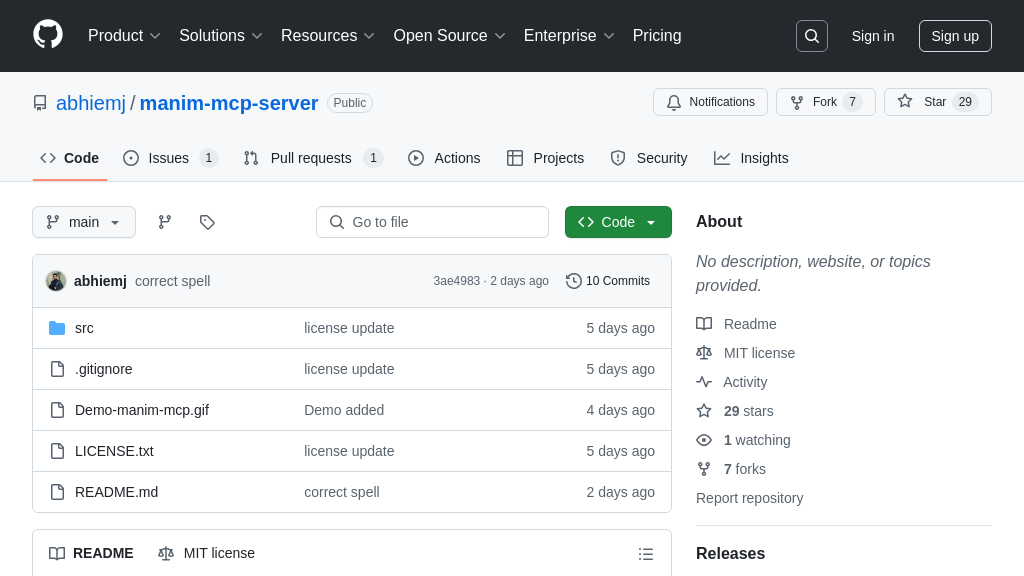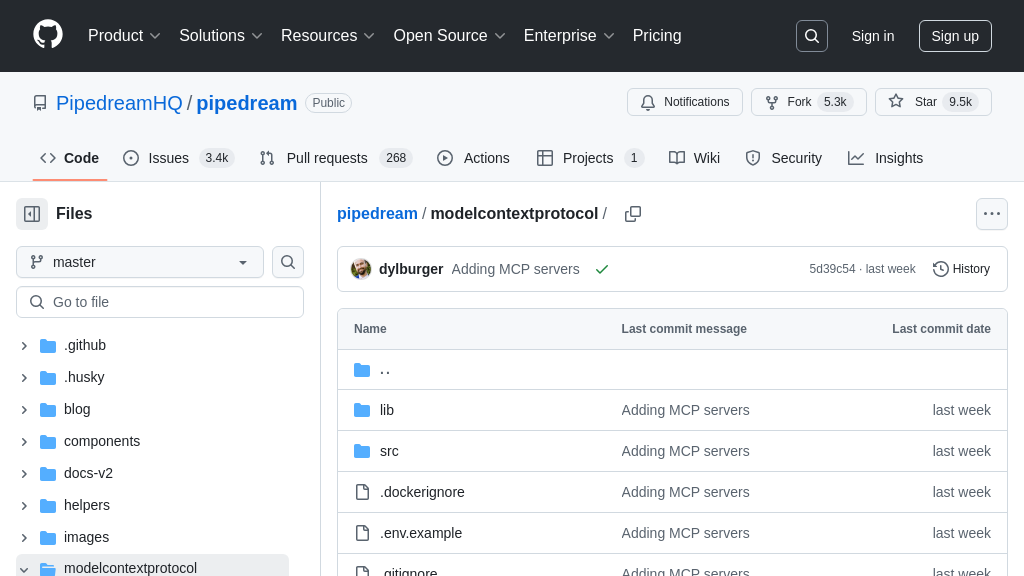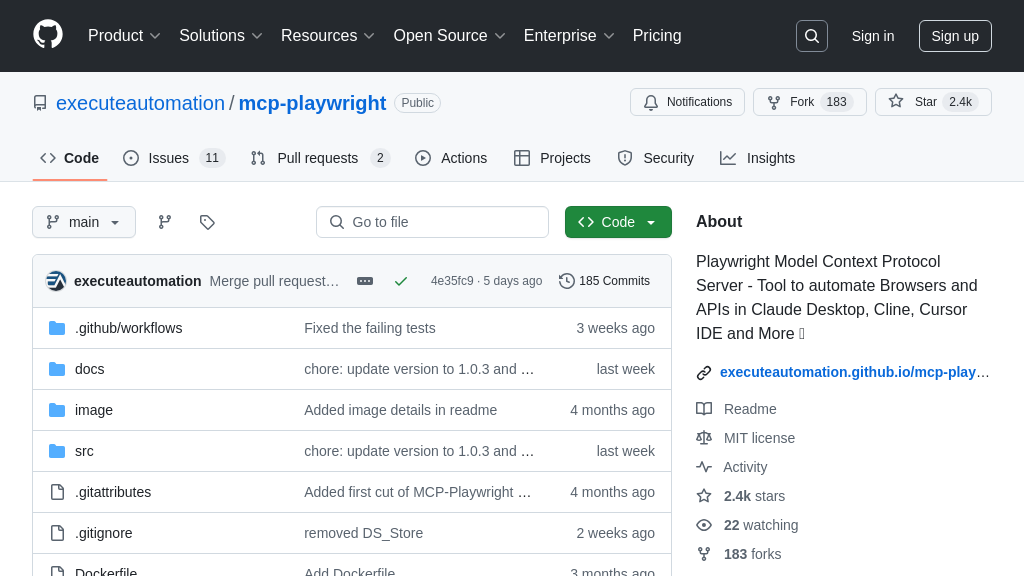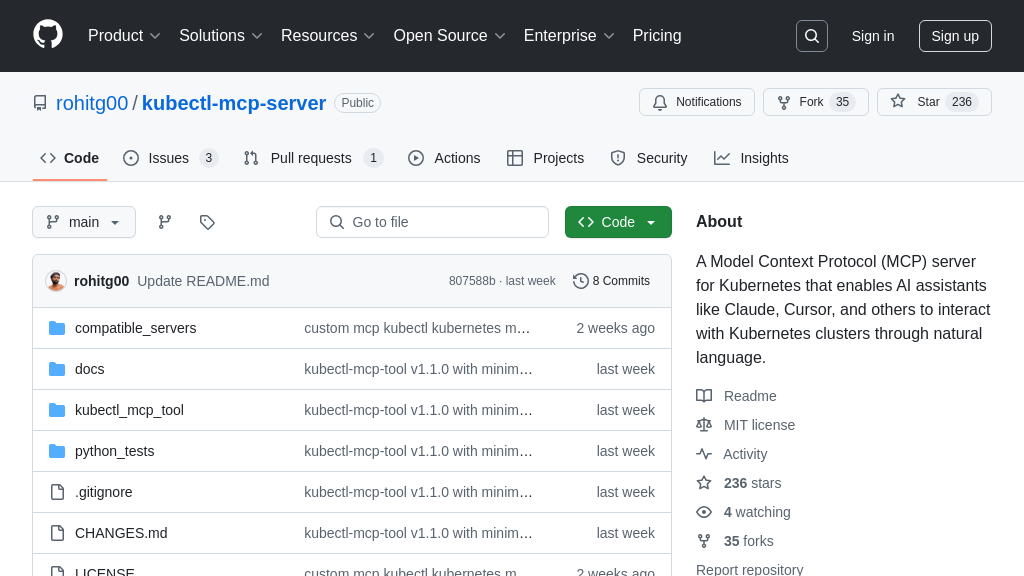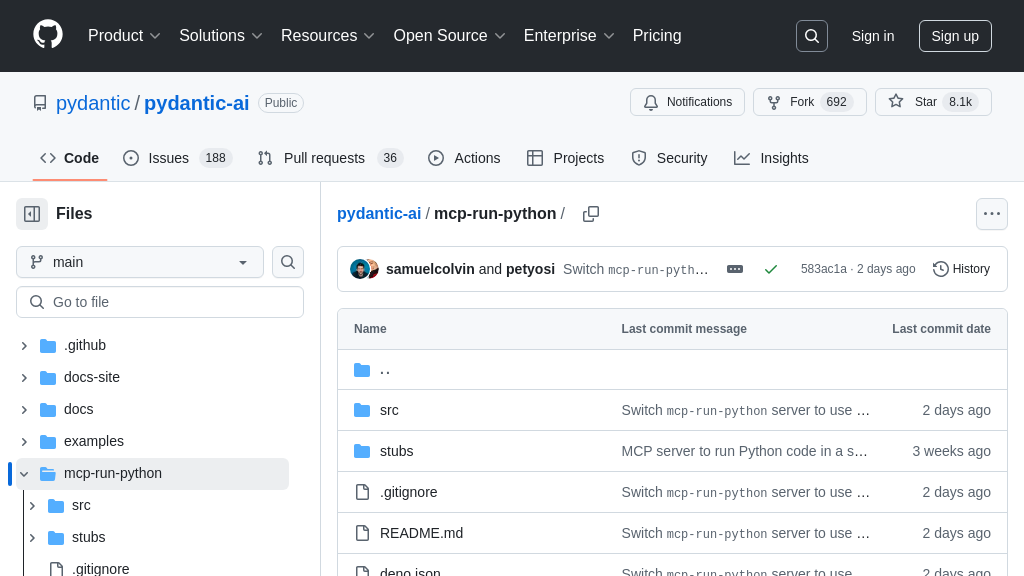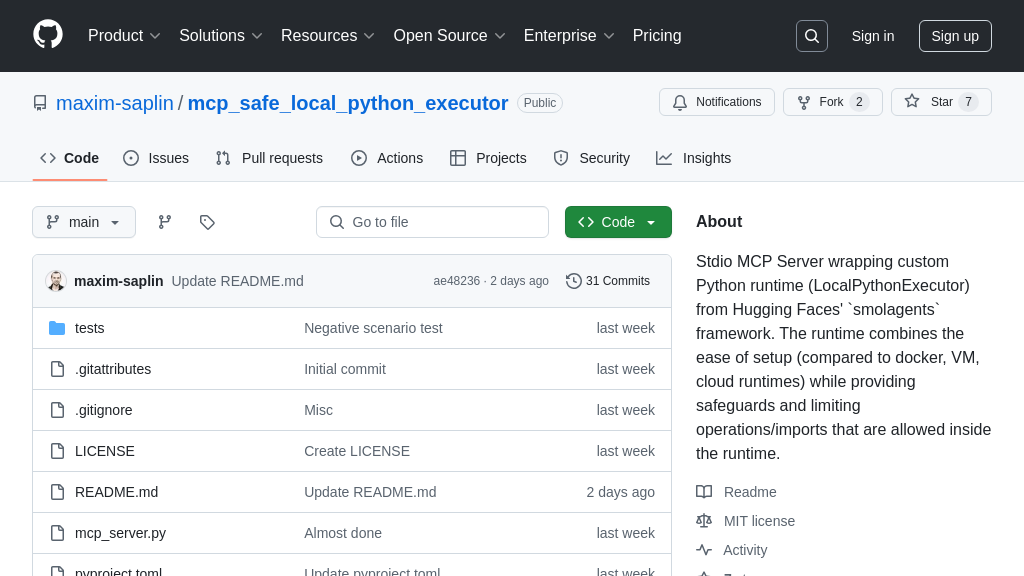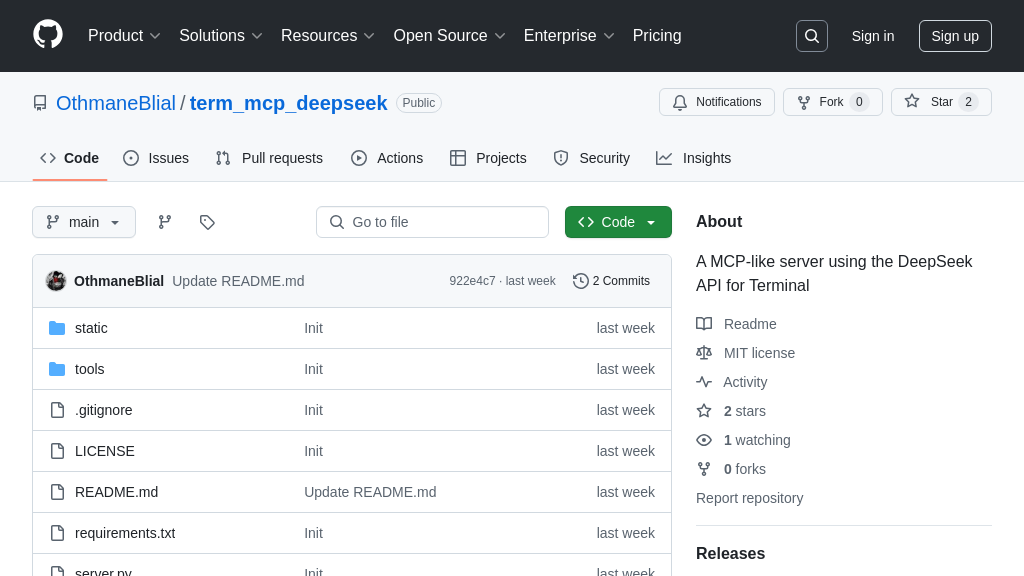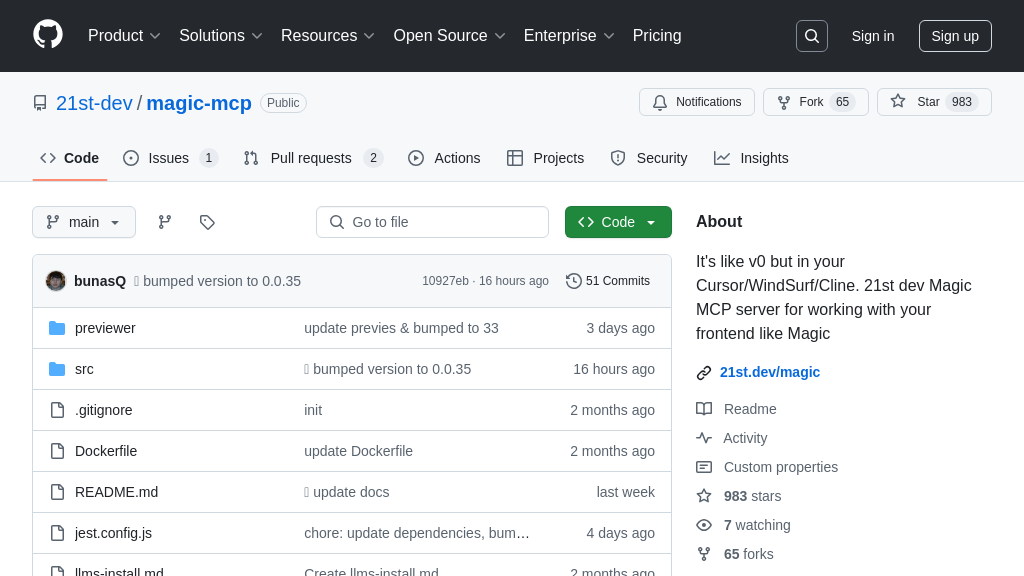jupyter-notebook-mcp
JupyterMCP: Connect Jupyter Notebook to AI models via MCP for AI-assisted code execution and data analysis.
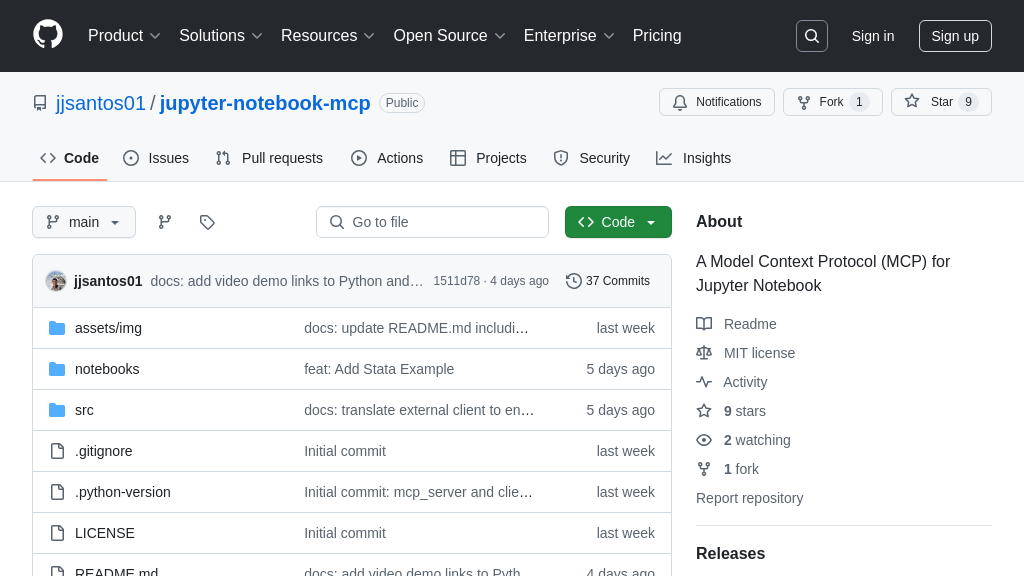
jupyter-notebook-mcp Solution Overview
JupyterMCP is a powerful tool that bridges the gap between AI models and Jupyter Notebooks, enabling seamless AI-assisted code execution, data analysis, and visualization. By connecting Jupyter Notebook to Claude AI via the Model Context Protocol (MCP), JupyterMCP allows Claude to directly interact with and control notebook environments.
This integration empowers developers to leverage AI for tasks like cell manipulation (inserting, executing, and managing cells), notebook management (saving and retrieving information), and output retrieval. The core of JupyterMCP lies in its WebSocket server, client JavaScript, and MCP server components, facilitating two-way communication between Claude AI and Jupyter Notebooks.
The value proposition is clear: streamline development workflows, enhance data exploration, and unlock new possibilities for AI-driven insights within the familiar Jupyter Notebook interface. JupyterMCP integrates with the Claude AI desktop application, requiring configuration in claude_desktop_config.json to specify the command for running the jupyter_mcp_server.py.
jupyter-notebook-mcp Key Capabilities
AI-Assisted Code Execution
Jupyter-notebook-mcp enables Claude AI to execute code directly within a Jupyter Notebook environment. This is achieved through a WebSocket-based server that facilitates two-way communication between the AI model and the notebook. Claude can insert code into cells, trigger their execution, and retrieve the output, allowing it to perform tasks such as data analysis, visualization, and automated scripting. The AI can iteratively refine code based on the results, creating a dynamic and interactive coding experience. This feature significantly reduces the manual effort required for tasks like data exploration and model prototyping.
For example, a data scientist could instruct Claude to load a dataset, perform exploratory data analysis, and generate visualizations, all without manually writing and executing each line of code. The AI handles the execution and presents the results, streamlining the data analysis workflow. The technical implementation involves the jupyter_ws_server.py which sets up the WebSocket and client.js which handles the execution of code.
Notebook Cell Management
This feature allows Claude AI to manage Jupyter Notebook cells, including inserting new cells, editing existing ones, and retrieving information about the notebook structure. Claude can strategically insert cells at specific positions to organize code and documentation. It can also modify cell content to correct errors, refine code, or update documentation based on user instructions or analysis results. The ability to retrieve cell information enables Claude to understand the notebook's layout and content, facilitating more informed decision-making during code execution and analysis.
Imagine a scenario where a user wants to create a presentation using a Jupyter Notebook. Claude can automatically insert markdown cells to provide explanations and code cells to demonstrate the concepts, structuring the notebook into a coherent presentation format. The insert_and_execute_cell, edit_cell_content, and get_cells_info tools are used to implement this functionality.
Seamless Data Interaction
Jupyter-notebook-mcp allows Claude AI to interact with data within a Jupyter Notebook environment seamlessly. Claude can load data from various sources, manipulate it using Python libraries like Pandas, and visualize it using libraries like Matplotlib and Seaborn. The AI can then analyze the data, identify patterns, and generate insights, providing users with a comprehensive understanding of their data. This feature eliminates the need for manual data loading, manipulation, and visualization, saving users time and effort.
For instance, a financial analyst could use Claude to load stock market data, calculate key performance indicators, and generate charts to visualize trends. Claude can then provide insights based on the analysis, helping the analyst make informed investment decisions. The run_cell and get_cell_text_output tools are crucial for this feature, enabling Claude to execute data manipulation code and retrieve the results.
Technical Implementation
The core of jupyter-notebook-mcp relies on a WebSocket server (jupyter_ws_server.py) to establish a persistent, bidirectional communication channel between the Jupyter Notebook and the external AI client (Claude AI). This server runs within the Jupyter environment and uses client.js to handle operations such as inserting and executing cells. The MCP server (jupyter_mcp_server.py) then implements the Model Context Protocol, translating AI requests into actions within the Jupyter Notebook. This architecture allows for real-time interaction and control, enabling Claude to dynamically interact with the notebook environment. The use of WebSockets ensures low-latency communication, which is crucial for interactive tasks.
